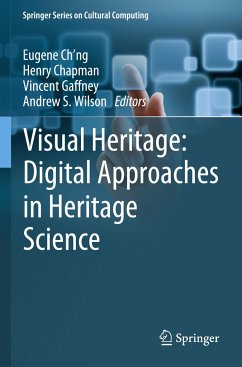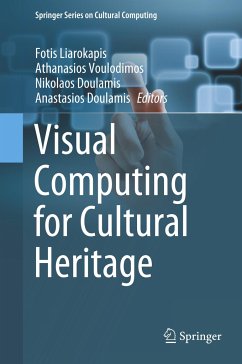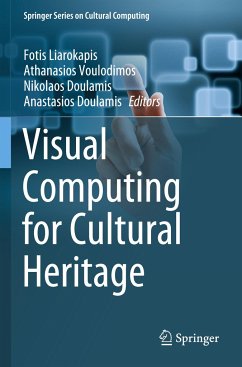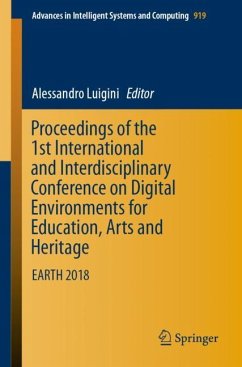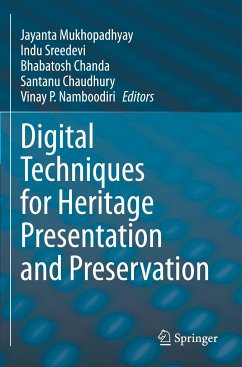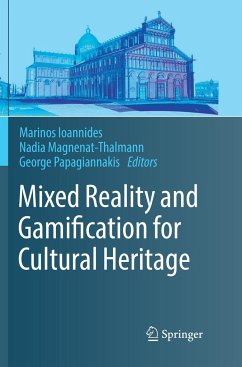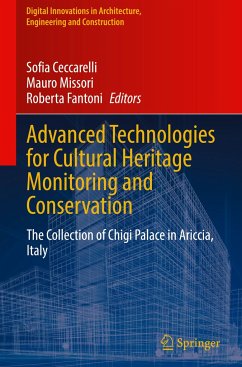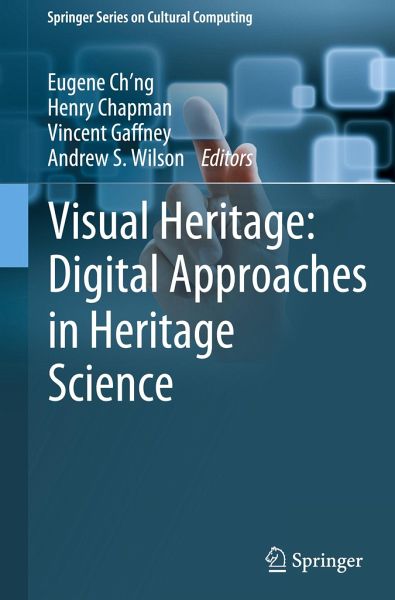
Visual Heritage: Digital Approaches in Heritage Science

PAYBACK Punkte
83 °P sammeln!
How we understand our shared and individual heritage, interpret and disseminate that knowledge is increasingly central to contemporary society. The emerging context for such development is the field of heritage science. Inherently interdisciplinary, and involving both the Arts and Humanities, engineering, conservation and the digital sciences, the development of heritage science is a driver for change; socially, economically and technically. This book has gathered contributions from leading researchers from across the world and provides a series of themed contributions demonstrating the theore...
How we understand our shared and individual heritage, interpret and disseminate that knowledge is increasingly central to contemporary society. The emerging context for such development is the field of heritage science. Inherently interdisciplinary, and involving both the Arts and Humanities, engineering, conservation and the digital sciences, the development of heritage science is a driver for change; socially, economically and technically. This book has gathered contributions from leading researchers from across the world and provides a series of themed contributions demonstrating the theoretical, ethical, methodological and technical methods which lie at the heart of heritage science. Archaeology, conservation, museology, the arts, forensic sciences, and heritage management are represented through collaborative research with specialists in applied technologies including object and terrestrial laser scanning, multi-spectral imaging, visualisation, GIS and 3D-printing.Together, the chapters present important case studies to demonstrate the recent advances and best practise within the discipline, highlighting the value of digital transformation across the heritage community that includes objects, monuments, sites and landscapes spanning two million years of natural and cultural history from all over the world.
Visual Heritage: Digital Approaches in Heritage Science is aimed at a broad academic and practice-led readership, which extends across many disciplines and will be of considerable value to scholars, practitioners, and students working within heritage and computer science at all levels. The content, which applies heritage science across two million years of cultural history will be appreciated by a general audience, as well as those wishing simply to explore the vast range of potential technical applications across all the disciplines represented in the book.
Visual Heritage: Digital Approaches in Heritage Science is aimed at a broad academic and practice-led readership, which extends across many disciplines and will be of considerable value to scholars, practitioners, and students working within heritage and computer science at all levels. The content, which applies heritage science across two million years of cultural history will be appreciated by a general audience, as well as those wishing simply to explore the vast range of potential technical applications across all the disciplines represented in the book.



